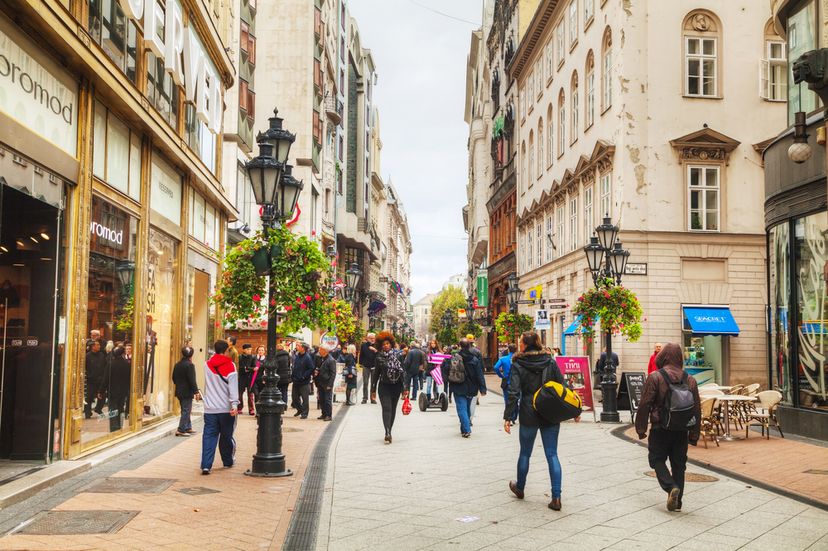
Budapest is a gorgeous city with two very distinct sides separated by the Danube River: Buda is on the west and Pest on the East. Merged into one city in 1873, both areas have developed very independently of each other and though they share similarities, each has its own, distinct flavour. While Buda is renowned for its grandeur and attractions like Hapsburg Palace, Pest is fiery and lively and home to bustling backdrops of ruin pubs, historic attractions, and replete café culture.
Advertisement
8. Danube Promenade
The Danube Promenade, called Dunakorzó by locals, is set between the ain Bridge and Elizabeth Bridge on the Pest side of the city along the Danube riverbanks. Throughout the 19th century, the area was a popular spot for promenades, hence the name, and as home to a wealth of upscale hotels including The Ritz, The Carlton, and the Bristol Hotel, each featuring wonderful terraces with a bird’s eye view of Buda Castle and the Danube. Elizabeth Bridge (Erzsébet híd), named after the wife of Emperor Franz Joseph, is along this stretch and one of the most exquisite bridges in the city. At the Pest side of the Chain Bridge is Széchenyi István Square, home to Art-Nouveau Gresham Palace. The promenade features more than a dozen interesting sculptures, including the Little Princess (Kiskirálylány), sitting long a stretch of handrail holding on with both hands and wearing an elongated crown.
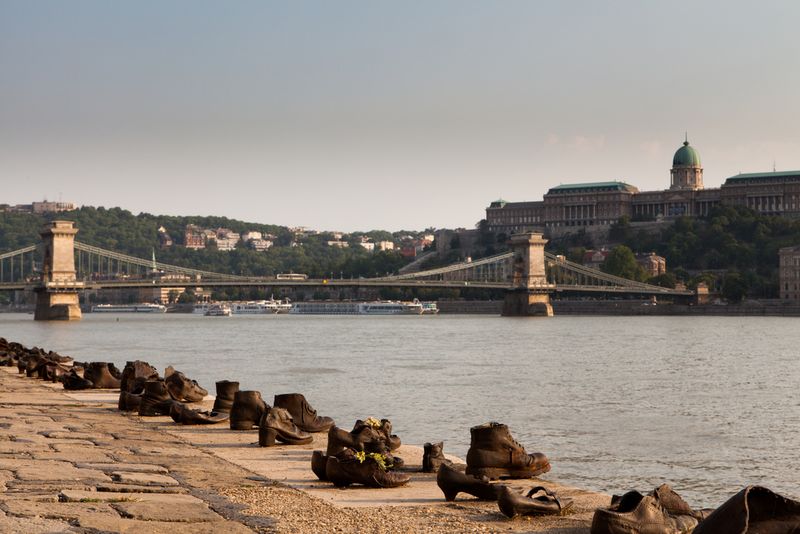
7. Váci Street
Váci Street is Budapest’s most popular pedestrian avenue in the downtown area filled with everything a city needs: restaurants, bars, shops, and small grocers are found along this stretch in the Belvaros neighborhood. Beginning at Vörösmarty Square and ending by the Central Market Hall, Váci Street is quite lengthy (and runs parallel with the Danube) but nicely broken up into small squares and pretty side streets that lead to the riverside. The summer months bring the crowds and so does the popular Christmas market in Vörösmarty Square. Cafes and shops are a little more pricey than usual (the street is a tourist magnet) so avoid buying but definitely not browsing: wine shops, clothing stores, bakeries, traditional items, and book stores abound. Váci Street displays varying architecture, dozens of large statues, and the beautiful 18th century Church of Saint Michael, where the Budapest Baroque Festival happens.
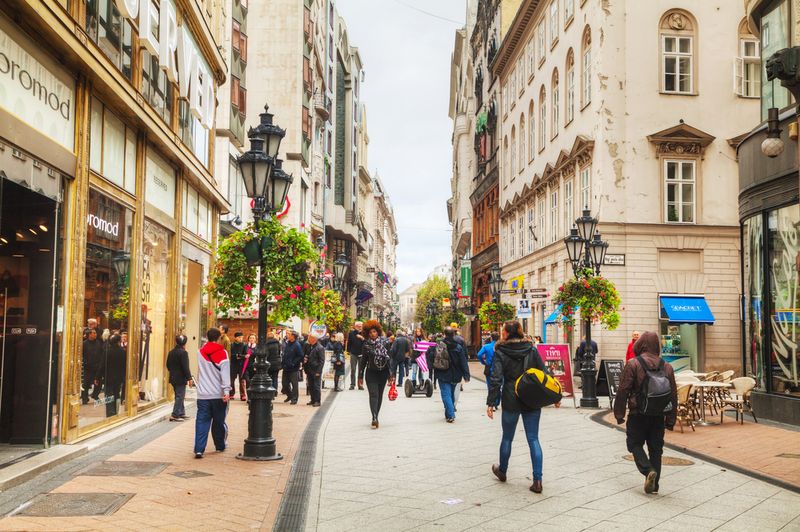
6. Széchenyi Thermal Bath
Hungarians love water and flock to Széchenyi Thermal Bath in the summer months to cool off in the massive outdoor pools. This thermal bath is one of the biggest natural hot springs in the world featuring 18 pools with both freshwater and geothermal baths on site. Originally built as a palace in Neo-Renaissance and neo-Baroque styles in the early 20th century, the bathhouse has served as the city’s stomping grounds for more than a century. The water source is from hot springs below Heroes’ Square, drilled in the late 19th century and supplying a small bathhouse preceding Széchenyi called Artesian Bath, flanked by stone walls and featuring marble baths and pools. The Palm House is the bathhouse’s rooftop oasis, filled with exotic plants and tall palms thriving in the heat of the baths and the sunlit glass-topped roof.
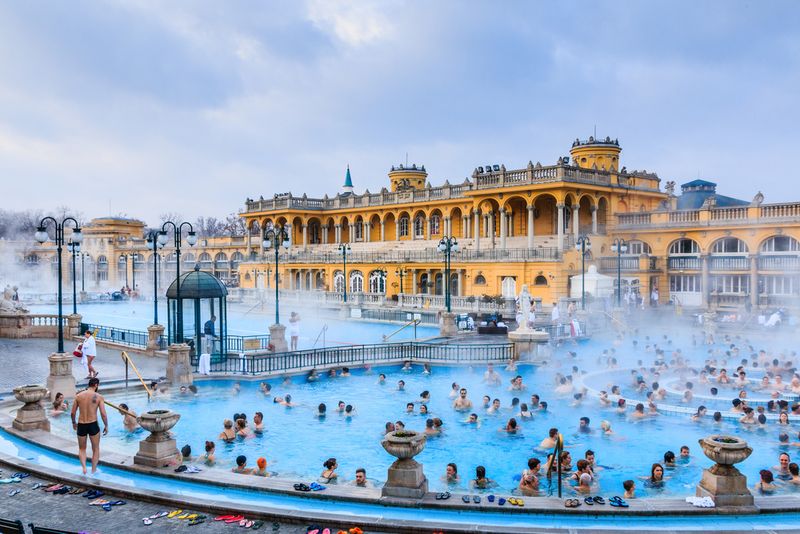
5. City Park
City Park (Városliget) offers a great escape from long days of exploring city attractions. The sweeping public park is near the city center and provides 302 acres of beautiful outdoor space. The main entrance from Heroes’ Square leads to several renowned attractions and a wealth of green space. In the northwest corner is the Budapest Zoo and Botanical Gardens, first opened in 1866, home to a nature reserve, significant art-nouveau buildings, and more than 1,000 species representing countries including Australia, India, and the Americas. Vajdahunyad Castle is also located in City Park and is a bit of a curiosity. Originally built of wood and cardboard (then reconstructed in brick) to celebrate the millennium, building styles illustrate Gothic and Romanesque, among many others, with the intention of representing design styles over the centuries since the Magyars settled Budapest. City Park also has a café and restaurants and several museums.
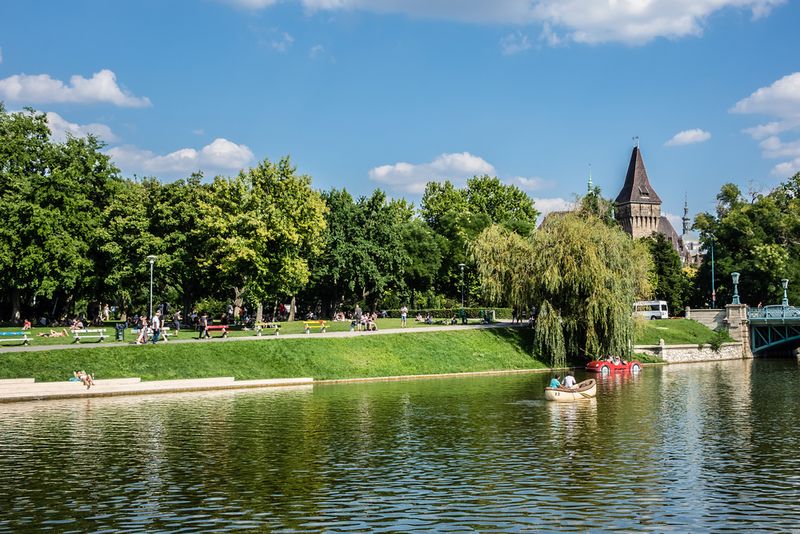
Advertisement
4. Central Market Hall
Central Market Hall (Nagycsarnok) is an historic building first built in 1894 when the separate cities of Pest, Buda, and Obuda merged into Budapest. Also called Great Market Hall, this was and still is the city’s largest market. Historically, traders sold meat, poultry, fish, produce, and dairy products delivered to traders directly by boat on the indoor canal. Located by Freedom Bridge, the market was all but destroyed by fire delaying the official opening. Following an extremely prosperous run, the market was again ravaged during WWII, rebuilt poorly, and shut down for safety reasons. In the 1990s, the government restored the market to its original grandeur. Today, Central Market Hall sells a variety of goods; the bustling ground floor contains fruit and vegetable stands, the basement house some fishmongers, game meat vendors, and a supermarket, and the upper floor teems with Hungarian artisans selling traditional arts and crafts.
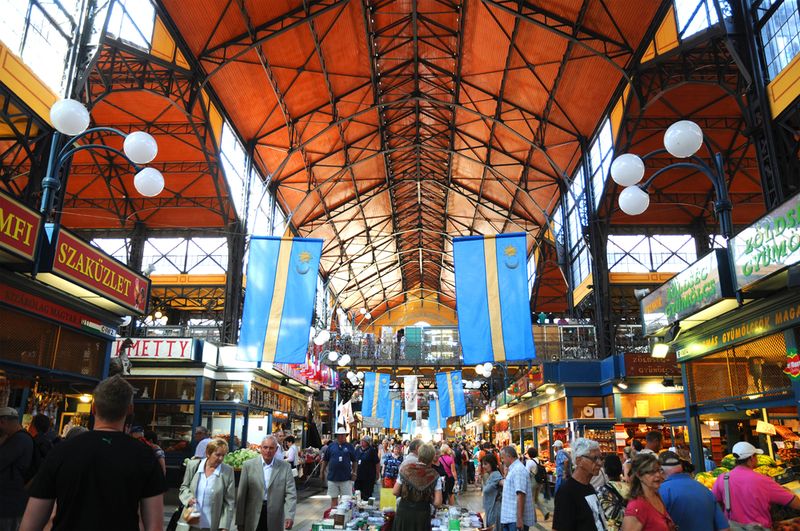
3. Andrássy Avenue
Trendy and elegant and one of the city’s largest cultural hubs, Andrássy Avenue is lined with wealth of attractions ranging from exhibition halls to top-notch museums to exquisite architecture. Almost three kilometers long, the broad route connects the city center to City Park, beginning at Heroes’ Square and spanning almost as far as St Stephen’s Basilica. Some are surprised to learn Andrássy Avenue is a World Heritage Site that dates back to the late 18th century. Major buildings along the road include the Liszt Ference Music Academy, the Hungarian State Opera House, rows of Neo-Baroque and Neo-Renaissance villas, and stately 19th century mansions. Along both sides of the famous road are buildings boasting beautiful friezes, detailed reliefs, and beautifully carved columns. Foodies shouldn’t miss Liszt Ferenc Square, also called Pesti Broadway, a major café and restaurant center with a diverse array of cuisine on offer.
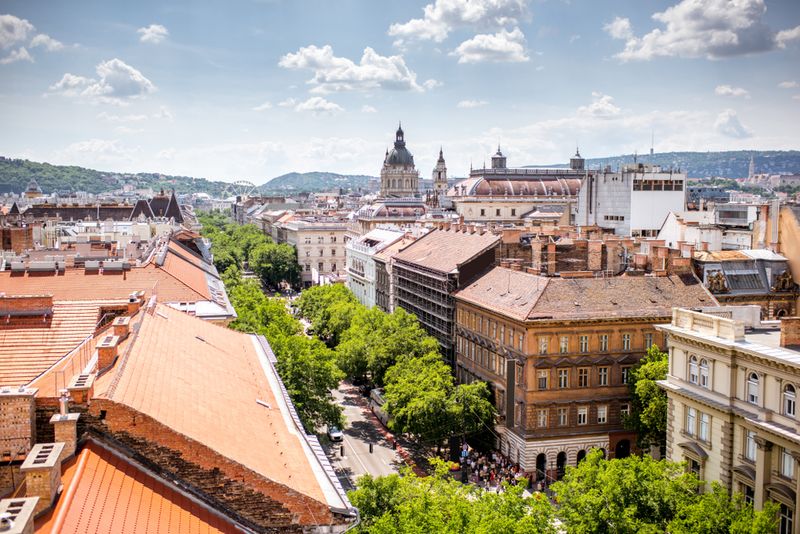
2. Heroes’ Square
Adjacent to the Palace of Art and the Museum of Fine Arts, Heroes’ Square commemorates Hungary’s most prominent leaders. Set at the City Park entryway, most arrive to explore the square via the M1 metro line that is now a World Heritage Site and the oldest line in the world. Both City Park and Heroes’ Square, built in the late 19th century, also commemorate the 1000th anniversary of the 895 Magyar triumph over Hungary and the 896 foundation of Hungary. At the monument’s front section, large cenotaph is flanked by a decorative iron chain, dedicate to the heroes that died fighting for national independence. On the flip side, is a major attraction within the square: the iconic series of statues epitomizing the Seven Chieftains of the Magyars. Because of the square’s historic significance and dedications, it’s common to see major political events happening within it.
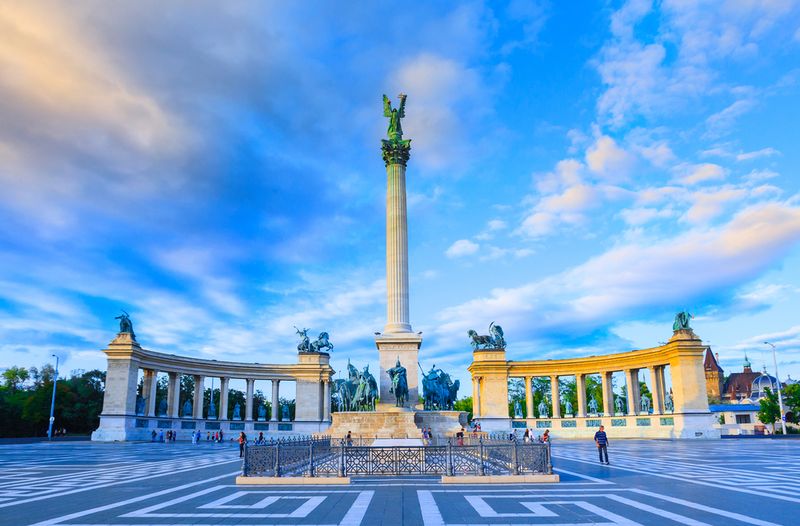
1. New York Café | The Boscolo Budapest Hotel
The Boscolo Budapest Hotel was once known as The New York Hotel and home the most extravagant coffee house in the city. Located in the Jewish Quarter, Boscolo was once The New York Palace, built for The New York Insurance Company in 1894. With heavy Italian Baroque influences, the palace’s main facade was illustrious and embellished with many statues and reliefs. The New York Café occupied the main floor in the 19th century, a point when coffee houses were wildly popular. Spiraled columns, ornaments, and chandeliers graced the interior, the backdrop to intellectual social affairs during the Belle Epoque period. A great musical scene made its way through in the 1920s and 30s but after WWII, the palace closed. After several poorly received revivals, an Italian luxury hotelier bought and renovated the property, restoring it to its original brilliance by 2006.
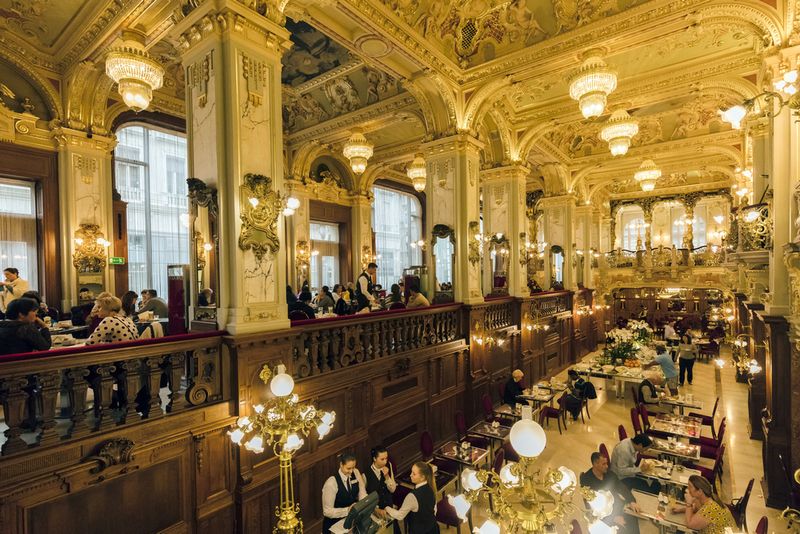
Advertisement